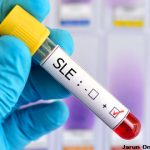Can We Stay Forever Young?
May your heart always be joyful
And may your song always be sung
May you stay forever young
Forever Young —Bob Dylan
Beneath the rubric of orphan diseases reside some rare conditions and others that are extraordinarily uncommon. These are the diseases that most physicians either never to get to see or may have the opportunity to observe only a single case in their career. Within this group resides one disease so exceptionally rare that one of the largest published case series describing those afflicted with this singular disorder listed more co-authors (25) than it did patients (15).1 It has been estimated that a mere 350 children worldwide suffer from this disorder, one so devastating because it mimics the aging process run amok. In fact, one movie, The Curious Case of Benjamin Button, starring Brad Pitt as a man who ages in reverse, touched on the emotional aspects of this illness.
Biology has advanced sufficiently to allow us to study the genomic details that shape an organism’s phenotype. Consider what happens when a single amino acid is switched from glycine GGC to glycine GGT in codon 608 of exon 11 in the lamin A (LMNA) gene. Instead of creating the code that produces lamin A, the fibrous protein responsible for providing structural function and transcriptional regulation in the cell nucleus, an aberrant protein, progerin, is manufactured instead.
Whereas lamin A is released by enzymatic cleavage and can harmlessly float away, progerin lacks this cleavage site and remains permanently anchored to the inner nuclear membrane, becoming an unwanted guest that wreaks molecular havoc with life-altering consequences. Progerin does everything wrong; it binds to the wrong proteins, it distorts the cell nucleus, it disrupts mitosis, and if this weren’t enough, it alters gene expression. The end result is the devastating Hutchinson–Gilford progeria syndrome, named after the two British practitioners who first described this illness in 1896 and 1897, respectively.
Progeria is one of 11 laminopathies caused by more than 180 known LMNA mutations that disturb or disrupt the nuclear envelope. Some are lethal, and others cause non-fatal, but serious, muscular and lipodystrophy syndromes. Cruel diseases all, but none so cruel as progeria, where a lifetime of aging is viciously compressed into a few decades of life. The affected child’s phenotype includes alopecia and sclerotic skin; bone growth abnormalities, including acro-osteolysis; hip, spine and clavicular anomalies; poor dentition; and a fatally accelerated aging of their heart and blood vessels, so that most affected children die from cardiovascular disease before they reach adolesence.1
